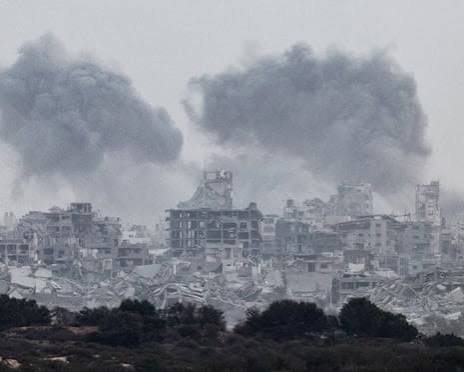Delegations from Israel, Hamas, and the United States are gathering in Egypt’s Sharm el-Sheikh today for indirect negotiations aimed at sealing a ceasefire based on President Donald Trump’s 20-point Gaza plan. Trump, posting on Truth Social Sunday, called recent talks “very successful and proceeding rapidly,” urging everyone to “MOVE FAST” to wrap up the first phase this week. He warned Hamas of “complete obliteration” if it doesn’t agree to hand over power, while telling Israel to pause its bombing campaign immediately—though strikes continued over the weekend, killing dozens more in Gaza.

Hamas’ chief negotiator, Khalil al-Hayya, is leading their team; he appeared in a rare video Saturday mourning his son, killed in an Israeli strike last month, and lamenting the “thousands lost” in Gaza. The clip, showing only his head and chest, is his first since surviving an assassination attempt in Doha. Israel’s side, headed remotely by Minister Ron Dermer, includes military and security reps like Gal Hirsch and Nitzan Alon. For the U.S., Trump’s son-in-law Jared Kushner and envoy Steve Witkoff are on the ground, focusing on technical details like Israeli withdrawal lines and prisoner swaps.
Trump’s blueprint calls for Hamas to release all 48 remaining hostages (20 believed alive) in 72 hours, in exchange for Israel freeing 250 life-sentence Palestinians and 1,700 others detained since the war started. It demands Hamas disarm fully, with monitors overseeing the destruction of their infrastructure, and sets up a temporary Arab-led stabilization force to handle security as Israel pulls back. A Palestinian committee under an international “Board of Peace” would govern until a reformed Palestinian Authority takes over, with nods to a future Palestinian state. Hamas has agreed to the hostage release and ceding admin control to technocrats but dodged disarmament and any role for Trump’s oversight board, saying those “inherent rights” issues need more discussion. They’ve insisted on staying part of a “comprehensive national Palestinian framework,” clashing with the plan’s zero-Hamas rule in governance.

On the ground, Palestinians in Gaza are cautiously hopeful but battered—UN data shows over 66,000 dead (18,000+ kids), 169,000 wounded, and nearly 80% of buildings damaged or destroyed since October 2023. Nearly all residents are displaced, 98% of farmland ruined, and famine has killed 455 from malnutrition. Israeli polls reflect a split: 62% see no “innocent bystanders” in Gaza, and 79% of Jewish respondents aren’t troubled by famine reports, though two-thirds want the war ended. Protests in Tel Aviv focus on hostages, not Palestinian casualties.
Experts are split too. Analyst Dan Senor calls it a “win for Israel, Palestinians, and the Arab world,” praising the phased approach. But Palestinian lawyer Diana Buttu argues it falls short on lasting peace, ignoring occupation roots. Jerusalem Post columnist Yaakov Katz warns the “devil’s in the details”—like what if Hamas can’t find all 48 hostages? Does the deal collapse?

Global backing is strong: Foreign ministers from Qatar, Jordan, UAE, Indonesia, Pakistan, Turkey, Saudi Arabia, and Egypt hailed Trump’s “sincere efforts.” UN chief António Guterres urged seizing the moment for a permanent truce, though rights experts flagged contradictions with international law and ICJ rulings on Israel’s occupation.
The talks come after failed ceasefires in late 2023 and early 2025, with Israel’s campaign—launched post-October 7 attacks that killed 1,200 Israelis and took 251 hostages—drawing genocide accusations from a UN inquiry (which Israel rejects as self-defense). Egypt, Qatar, and the U.S. are mediating again, but uncertainties linger on withdrawal timelines, Hamas’s role, and enforcement. As one flotilla activist deported from Israel put it upon landing in Spain: “We fear for the remaining prisoners,” highlighting the human cost amid diplomatic maneuvering. With Trump eyeing a Nobel nod, the pressure’s on—but two years in, Gaza’s still a powder keg.




